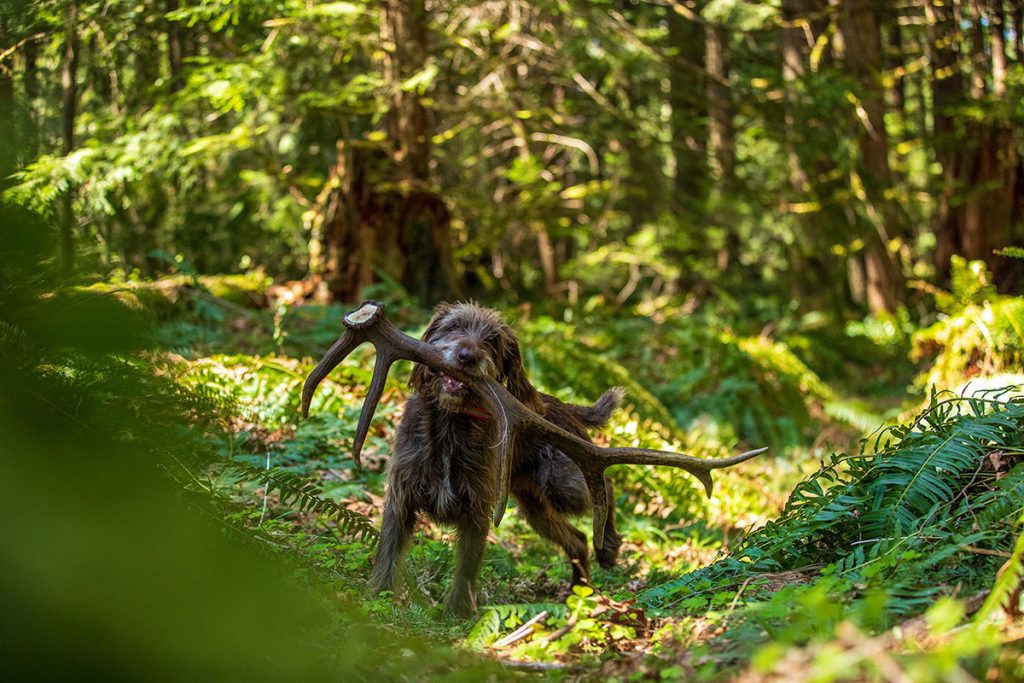Key Strategies for Effective Communication with your Hunting Dog
“Your dogs are just sitting there, staring at you with such intensity?” noted a man I was teaching about how I trained my dogs to track birds. My dogs, Echo (5) and Kona (2) at the time, both pudelpointers, sat exactly where instructed, just as they’d been doing since they were 10 weeks old. Both dogs knew we were in training mode, and they were eagerly awaiting the next set of instructions. Actually, Echo and Kona were trying to read my eyes to see what my next action would be, which would key them in as to what their next command was going to be. In other words, their drive to please me was so intense, they were trying to anticipate what to do before I instructed them.
Eye contact is an important training tool you can develop. A dog that’s been trained to watch your eyes will actually be able to read your mind through your eyes, eagerly trying to please you before you even tell it what to do. The man I was coaching how to train dogs, was blown away by this, but when I explained what was happening, it made perfect sense to him.
The man I was working with was a dentist and had three high school and college age children. “When you were raising your kids, or when you talk to your patients and you need to tell them something important, what’s the first thing you do?” I asked. “Well, I make sure I have their attention before talking,” the man came back. “And you affirm that by eye contact, right?” I responded. He smiled as the lightbulb turned on.
The gentleman was new to dog training and didn’t understand the high level of intelligence a hunting dog from a quality bloodline possesses. Nor did he realize their drive to please their master.
I was a science teacher for over a decade before getting into the outdoor industry full time, 24 years ago. My wife and I have two sons in their 20s. Eye contact is the focal point of establishing clear communication in our marriage, with our children, even with our dogs.
Eye contact starts the moment you bring a puppy home. The easiest way we’ve found to get a puppy to look at you is by holding a small piece of kibble by your eye while giving the command, “look at me.” You want the puppy to look into your eyes before giving the next command. Whatever command you give should maintain the same positive inflection every time, for the life of the dog. And every family member should communicate the same way, with the same words and tone, in order for the dog to understand what’s expected.
If family members have a hand in training the pup, make sure everyone is on the same page. Not only is it important to give directions using the exact same words, but to also deliver them in a consistent manner and with the same exact tone. It’s best to establish control of the pup through eye contact before giving any directives. By holding a treat next to your eye, teach the pup to look into your eye as soon as you get it home, as this will calm the pup and establish that you’re the one in control. Quickly, the pup will learn that another command like “sit” or “come” is quick to follow. From there, they’ll be looking to please you as other commands come.
When training, no matter how bright the sun is shining, I never wear sun glasses. If wearing a hat, make sure the brim is up so the dog can see your eyes. Most dogs are so tuned in to reading your thoughts through your eyes, covering your eyes will only confuse them and make it harder for them to read you. They’ll be able to sense if you’re happy, sad, mad or frustrated, all through simply looking at your eyes, without a word being said.
As training sessions progress into retrieving, tracking, hand signal training, and more, you’ll see your puppy wanting to make eye contact with you as soon as possible. If a puppy respects you, it will want to please you, and this will lead to a dog that’s willing to work hard to make you happy.
When your pup does well, praise it, and be sure to look into it’s eyes and offer a smile, even a treat. Often, no words are needed, as they can see the sincerity in your eyes. This look of approval, alone, is often all it takes to praise a pup and keep it motivated. If you’re into rewarding dogs by giving them a treat, this can help maintain their focus and build their motivation to please you.
From eight weeks of age throughout your dog’s entire life, eye contact will be one of the most important tools of communication you’ll rely on. Start early, use it every day, and be consistent. When a pup respects you, it’ll do anything to please you, even to the point of reading your mind and knowing what your next move will be, before you make it.
Note: Watch Scott Haugen’s series of basic puppy training videos at scotthaugen.com and follow his adventures on Instagram and Facebook.

